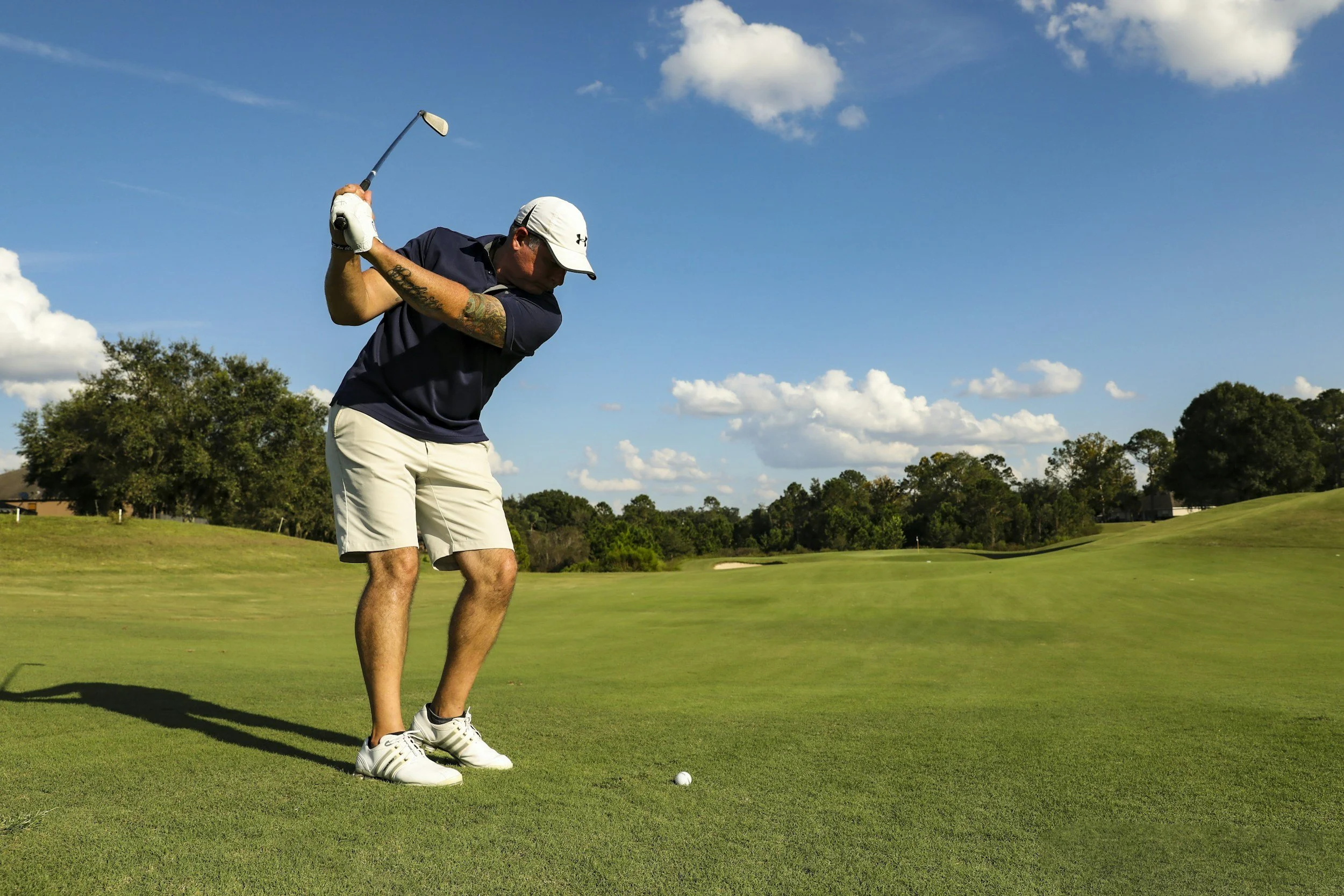Strength Training for Golfers: What the Pros Do (and You Should Too)
Golf has evolved dramatically in recent years—from a game once focused on finesse to a sport where strength and power play a leading role. Today’s top golfers are not only skilled technicians but also elite athletes. They spend as much time training off the course as they do practicing their swing, recognizing that strength is key to generating speed, maintaining control, and avoiding injuries.
READ: What TPI-Certified Physical Therapy Can Do for Your Golf Performance
Strength training isn’t just for long drives. It enhances posture, balance, and muscular endurance, all of which are essential for consistency throughout 18 holes. When your body is stronger, you can create more torque in your swing without losing control or overloading your joints.
For amateur players, strength training can be a game-changer. It’s not about building bulk—it’s about building a resilient, athletic body that supports a powerful and repeatable swing. At Bulletproof PT, we help golfers build strength the right way: with purpose, precision, and a plan tailored to how the body moves on the course.
Key Muscle Groups That Power Your Swing
A powerful, efficient golf swing doesn’t come from your arms alone—it’s a full-body movement driven by a coordinated chain of muscles, with particular emphasis on the hips, glutes, core, and shoulders. Strengthening these areas is crucial not only for improving performance but also for reducing the risk of injury.
READ: Building Strength and Resilience During the Off-Season with Bulletproof PT
The hips and glutes are the engines of your swing. They generate rotational force and allow you to transfer power from the ground up through your body. Weakness here often leads to overcompensation in the lower back, a common source of pain in golfers.
Your core—comprising the abdominals, obliques, and deep spinal stabilizers—provides the control and stability needed to maintain posture and transfer energy smoothly throughout the swing. A strong core helps prevent swaying, sliding, or early extension during your backswing and follow-through.
Shoulder strength and mobility are also vital for maintaining the swing plane and protecting the rotator cuff under repeated stress. When all these areas work together, your swing becomes more stable, consistent, and explosive.
How the Pros Train Off the Course
Top golfers don’t leave their performance to chance. Strength training is a non-negotiable part of their routine—not just for driving distance, but for durability, balance, and career longevity. If you look at players like Rory McIlroy, Brooks Koepka, or Nelly Korda, their off-course training is just as disciplined as their on-course practice.
Professional golfers focus on functional strength, not just traditional weightlifting. Their programs include explosive power drills like medicine ball throws, rotational cable work, and plyometrics—movements that closely mimic the demands of the golf swing. Mobility work, such as dynamic stretching and thoracic spine rotations, is also built into every session to ensure optimal range of motion.
READ: Maximizing Athletic Potential Through Integrated Strength and Therapy Programs
Many of these athletes work with Titleist Performance Institute (TPI)-certified professionals who tailor strength and conditioning plans to their swing characteristics, injury history, and performance goals. This targeted approach helps pros maintain peak physical condition through long competitive seasons.
At Bulletproof PT, we bring that same elite-level methodology to recreational golfers—helping you train like the pros, even if you’re not on tour.
TPI-Informed Strength Programs: Built for Golf Performance
At Bulletproof PT, we don’t believe in cookie-cutter workouts. Every golfer is unique, and that’s why we use the Titleist Performance Institute (TPI) framework to assess and build individualized strength programs that align with your swing mechanics, physical limitations, and performance goals.
The process begins with a TPI movement screen—a series of assessments designed to identify mobility restrictions, stability deficits, and strength imbalances that may be affecting your swing. From there, we create a strength training plan that targets the areas holding you back, whether it’s limited hip rotation, poor core control, or shoulder instability.
Our programs blend traditional strength training with golf-specific movement patterns, focusing on improving power production, coordination, and movement efficiency. Every exercise serves a purpose, and each phase of training builds on the last to support long-term progress.
READ: The Benefits of Functional Dry Needling for Pain Relief and Recovery
We also integrate physical therapy principles to ensure safety and precision, particularly for golfers recovering from injury or dealing with chronic pain. The result is a smarter, more strategic way to train—one that’s rooted in performance and backed by biomechanics.
Results We See at Bulletproof PT
Golfers who commit to strength training at Bulletproof PT often see measurable improvements within weeks. Whether it's increased clubhead speed, better swing control, or fewer aches after a round, the results speak for themselves.
Many of our clients report hitting longer drives and feeling more balanced during their swing after improving core and glute strength. As their mobility improves alongside their power, they experience smoother transitions and more consistent ball striking. These physical gains often translate into lower scores and greater confidence on the course.
Injury prevention is another key benefit. By reinforcing proper movement mechanics and eliminating weak links in the kinetic chain, we help golfers avoid common issues like low back strain, shoulder impingement, and elbow pain. This means fewer setbacks—and more uninterrupted time doing what they love.
Most importantly, we tailor our programs to match each golfer’s skill level and lifestyle. Whether you're a weekend player or preparing for competitive rounds, our strength training programs are designed to make your body a more efficient, reliable tool for peak performance.

